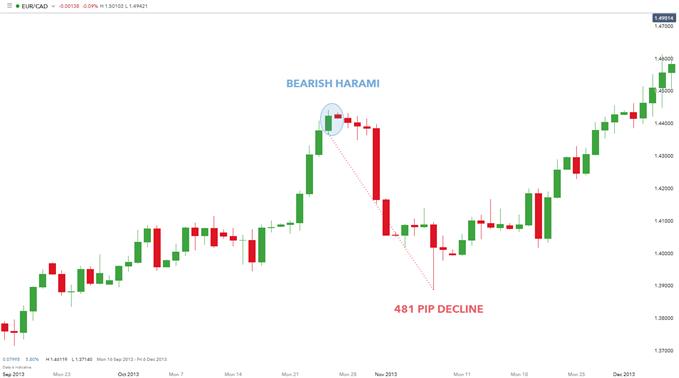
Reversal patterns are very popular in technical trading because they allow traders to take advantage of shifts in market trends. The Harami candlestick is easy to recognize and can help spot a reversal at just the right moment, while keeping risks low.
By identifying Harami reversals, traders can get a clearer sense of the market’s direction and pinpoint areas to manage risk. The Harami is one of the most commonly used reversal patterns. Like other candlestick patterns, the Harami reflects real-time market sentiment. Once the pattern is complete with the closing of the signal candle, traders can look to the next candle to confirm the market’s direction and identify key risk levels.
In this article, we’ll dive deep into the Harami candlestick and other reversal patterns, and show you how to use this knowledge to build a trading strategy.
Why Do Traders Look Out for Reversal Patterns?
In candlestick trading, signals are generally grouped into two categories: reversal patterns and continuation patterns. Continuation patterns help traders identify when the current trend is likely to keep moving in the same direction.
Reversal patterns, on the other hand, help traders spot when the market sentiment that was driving a trend might be changing, signaling a possible shift in direction. The way the candles form on the chart reflects the actions of buyers and sellers, giving clues about these potential reversals.
Understanding and being able to identify reversal candlestick patterns like the Harami can be very helpful for traders. It allows them to take advantage of shifts in trends, potentially leading to profitable trading opportunities.
Using the Harami Candlestick to Catch Reversals
The Harami candlestick pattern is popular because it helps traders catch a market reversal at just the right moment, with minimal risk. This can lead to favorable risk-reward ratios. To effectively use the Harami pattern to spot reversals, it’s important for traders to understand its origins and how to combine it with other technical tools.
Supporting Functions of the Harami
When learning about candlestick trading to identify market turning points, traders often encounter the Doji candlestick early on. The key lesson is that the appearance of a Doji can signal a potential reversal and an ideal time to enter a trade.
A Doji is a single candle where the open and close prices are nearly the same, and it has upper and lower wicks, resembling a “+” sign. The next candle after the Doji is crucial, as it indicates the preferred direction for the trade.
After a Doji forms, it’s helpful to use other technical indicators, like oscillators or moving averages, to determine if the currency pair is in an extreme condition. This helps identify when candlestick patterns, like the Harami, are most powerful.
The Harami pattern gets its name because it looks like a “pregnant woman.” The first candle is a large one that continues the current trend, while the second, smaller candle resembles a pregnant belly. The second candle will show whether the Doji leads to a reversal or continues the existing trend.

Bearish Harami Example
The chart above (if applicable) shows a Bearish Harami in action on the EUR/CAD currency pair. The daily chart had been in a long-term uptrend, but prices tend to pull back along the way. The most recent pullback started with the formation of a Harami. After it formed, the market hit a high and then quickly dropped by 481 pips.
Traders who spot the Bearish Harami pattern can incorporate it into their existing trend trading plan. They might decide to take profits on any current long trades or even consider trading a full reversal when this pattern appears. No matter the strategy, it’s important for traders to keep track of their results using a trade journal. This way, over time, they can evaluate how effective price action and candlestick analysis are in their trading.